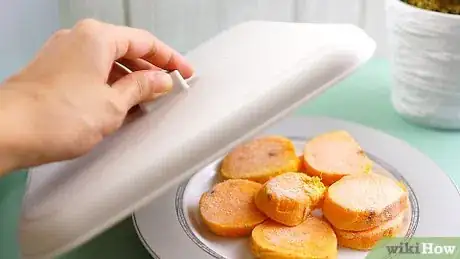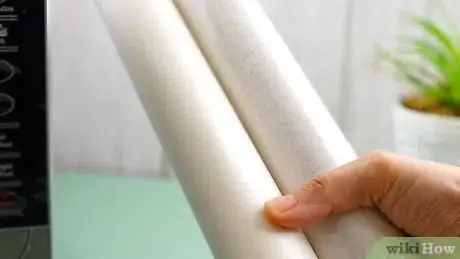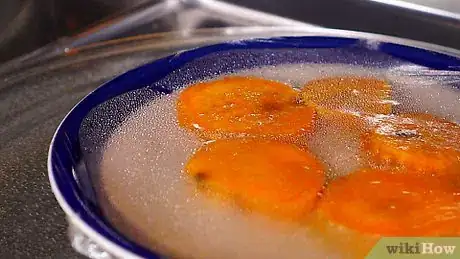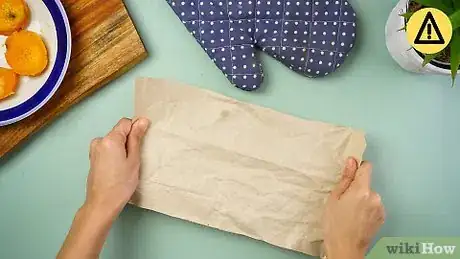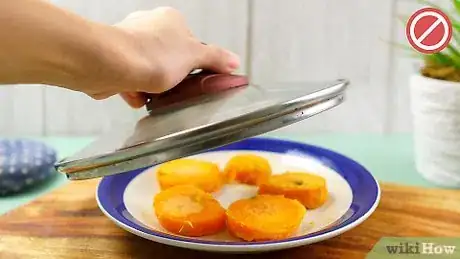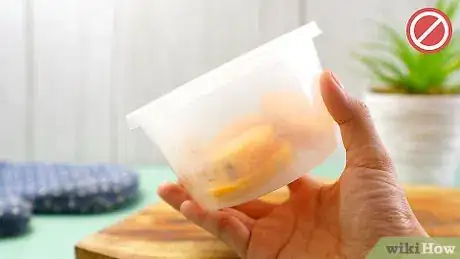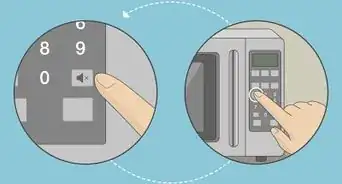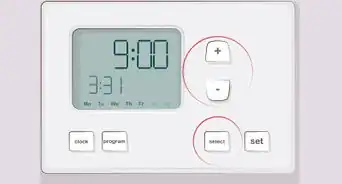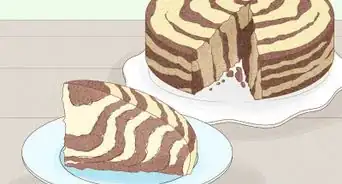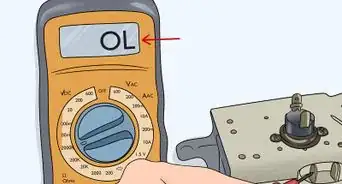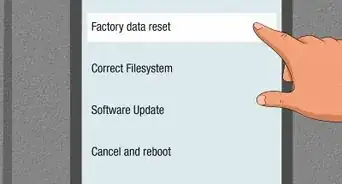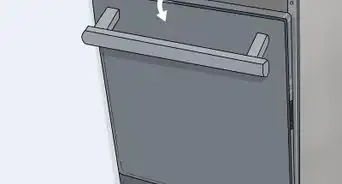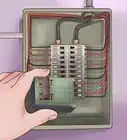This article was co-authored by wikiHow staff writer, Jessica Gibson. Jessica Gibson is a Writer and Editor who's been with wikiHow since 2014. After completing a year of art studies at the Emily Carr University in Vancouver, she graduated from Columbia College with a BA in History. Jessica also completed an MA in History from The University of Oregon in 2013.
There are 7 references cited in this article, which can be found at the bottom of the page.
The wikiHow Video Team also followed the article's instructions and verified that they work.
This article has been viewed 40,488 times.
Learn more...
Microwaves are a convenient appliance that most people don't think about until there's a problem. If your microwave isn't heating food effectively or the inside is covered with splattered food, learn how to cover your food before microwaving it. As long as you know which materials to avoid, it's easy to safely cover and reheat last night's dinner. By covering your food, you'll also save yourself the trouble of deep-cleaning your microwave.
Steps
Choosing a Cover
-
1Buy a sturdy plastic cover for microwaving food. You can buy a domed or flat plastic cover that sits over your dish of food. The reusable cover is easy to wash and prevents food from splattering against the microwave's sides and turntable. Since the cover should be larger than your dish, you don't have to worry about the plastic touching your food.[1]
- Check the package when you buy the cover to ensure that the plastic is microwave-safe.
- Choose a cover that has several vents so steam doesn't build up.
-
2Find a microwave-safe glass lid to put on your dish. If you're heating food in a glass or ceramic container, the dish may have come with its own heat-proof lid. Check the glass lid for vents, which let steam escape. If you don't see vents, you'll just need to tilt the lid off to the side so steam doesn't build up when you heat your food.
- Always check the bottom of your dish set, to tell if it's microwave safe. The words will be printed on the dish or you'll see a square with wavy horizontal lines in the center.
Advertisement -
3Drape a paper towel over greasy food to prevent splatters. Paper towels are great for catching grease and allowing steam to escape. Look for paper towels that say they're microwave-safe on the package and avoid using paper towels that are made with recycled paper. Recycled products may actually have metal particles, which can spark if you microwave them.[2]
- Consider using paper towels if you're reheating sausages or bacon, for instance.
- If you don't have paper towels, you could use microwave-safe paper plates or napkins.
-
4Reach for plastic wrap or waxed paper if you don't have other covers. You probably have plastic wrap or waxed paper on hand, but you'll have to cover your food carefully. If the plastic or wax touches the food, chemicals can transfer and contaminate your food, so use caution. Choose plastic wrap that's labeled microwave-safe, so it doesn't melt.[3]
- To minimize your risk, try not to use plastic or wax if you'll be microwaving the food for a long time.
- Parchment paper is also safe to use if it doesn't come into contact with the food.
Tip: Instead of stretching the plastic wrap tightly over the top of your container, drape it loosely so steam can escape. If you do pull the plastic wrap tightly, poke several slits on the top.
Microwaving Your Food Safely
-
1Spread your food on a microwave-safe dish. If you're not sure if a dish is safe to put in the microwave, check the label on the bottom. It should say "microwave-safe" or show a square with horizontal wavy lines inside it. Then, put the food you want to heat on the plate so it's evenly distributed.[4]
- Don't pile all of the food in the center of the plate or the microwave will heat the edges of the food faster than the middle.
-
2Place your choice of cover loosely over the food. Put your dish of food in the microwave and put the cover over the food so it's not touching. Remember to keep the cover loose or use a cover that has slits so steam can escape.[5]
- If your dish of food is spilling over the sides, divide the food between 2 plates and reheat them separately.
-
3Microwave the food, stirring it halfway through the heating time. Put your dish into the microwave and program your machine for half of the amount of time you think it will take to heat the food. Then, open the door and carefully lift the cover away from you. Stir the food so the microwave can finish heating the food evenly.[6]
- It's important to lift the cover away from you so hot steam doesn't get right in your face.
-
4Heat your food until it's steaming. Lay the cover back over the food and close your microwave door. Microwave the food until there aren't any cold spots in the food and you can see steam rising from the surface. If you're microwaving something for more than a few minutes, you may want to stop and stir the food 1 more time.[7]
- If you're reheating a leftover meal, plan on microwaving the food for a total of 1 to 2 minutes.
Tip: If you're cooking food in the microwave, not just reheating it, always use an instant-read thermometer to ensure that the food has reached a safe temperature. For example, heat ground meat to 160 °F (71 °C), beef or pork to 145 °F (63 °C), chicken to 165 °F (74 °C), and egg dishes to 160 °F (71 °C).
-
5Wear oven mitts to remove the dish and carefully take the cover off. If you've microwaved food for more than 1 minute, the dish might be too hot to simply take out of the microwave. Put on mitts to protect your hands and set the hot dish on the counter. Then, slowly take the cover off so the steam goes away from your face.[8]
- If you've cooked food in the microwave, follow any standing times before you check the temperature. For example, if you cooked an eggy casserole, let it sit for 3 minutes and check the temperature to ensure it's reached 160 °F (71 °C).
Avoiding Damaging Materials
-
1Skip covering your food with brown paper. In a pinch, you might think you could lay a sheet of brown paper, newspaper, or a brown paper bag over your food to prevent splatters in the microwave. Unfortunately, these are highly flammable and could start a fire inside your machine.[9]
- Newspaper and printed bags can also release toxic fumes from the ink and glue that's on them.
-
2Never cover your food with anything metallic. Don't put metallic things into your microwave since the radio waves reflect off of metal and can spark. Check your containers for metallic paint and remove metal twist ties from packages.[10]
- If you have a metallic pan of takeout or a takeout container with metal handles, transfer the food to a glass or ceramic before heating the food.
Tip: In general, try to avoid putting aluminum foil into the microwave. If absolutely necessary, you can use a small, wrinkle-free sheet to shield food from overcooking as long as you don't cover more than 25% of the food with foil.
-
3Don't heat food in takeout or single-use storage containers. It's tempting to toss your leftover container of takeout into the microwave to save a little time, but don't do it! Single-use containers and tubs might melt or leach toxins into your food. Never microwave your food in any of these containers:[11]
- Styrofoam or foam-insulated containers
- Yogurt tubs
- Margarine or whipped topping containers
- Takeout trays
- Heavily-scratched reusable containers
Warnings
- Never put anything metallic in the microwave. Metal reflects the radio waves and can spark, which might cause a fire.[12]⧼thumbs_response⧽
Things You'll Need
- Cover of your choice
- Microwave-safe dish
- Spoon or fork
- Instant-read thermometer
- Oven mitts
References
- ↑ https://www.webmd.com/diet/features/microwave-covers-are-they-safe
- ↑ https://products.geappliances.com/appliance/gea-support-search-content?contentId=18855
- ↑ https://www.fsis.usda.gov/wps/wcm/connect/fsis-content/internet/main/topics/food-safety-education/get-answers/food-safety-fact-sheets/appliances-and-thermometers/microwave-ovens-and-food-safety/ct_index
- ↑ https://www.thekitchn.com/the-rules-for-plastic-in-the-microwave-228686
- ↑ https://www.fsis.usda.gov/wps/wcm/connect/fsis-content/internet/main/topics/food-safety-education/get-answers/food-safety-fact-sheets/appliances-and-thermometers/microwave-ovens-and-food-safety/ct_index
- ↑ https://www.fsis.usda.gov/wps/wcm/connect/fsis-content/internet/main/topics/food-safety-education/get-answers/food-safety-fact-sheets/appliances-and-thermometers/microwave-ovens-and-food-safety/ct_index
- ↑ https://www.fsis.usda.gov/wps/wcm/connect/fsis-content/internet/main/topics/food-safety-education/get-answers/food-safety-fact-sheets/appliances-and-thermometers/microwave-ovens-and-food-safety/ct_index
- ↑ https://www.hallcounty.org/DocumentCenter/View/1411/Cooking-Safety-PDF?bidId=
- ↑ https://www.businessinsider.sg/things-you-cant-microwave-2019-1
- ↑ https://www.fsis.usda.gov/wps/wcm/connect/fsis-content/internet/main/topics/food-safety-education/get-answers/food-safety-fact-sheets/appliances-and-thermometers/microwave-ovens-and-food-safety/ct_index
- ↑ https://www.thekitchn.com/the-rules-for-plastic-in-the-microwave-228686
- ↑ https://www.cfs.gov.hk/english/programme/programme_rafs/programme_rafs_ft_02_01.html
